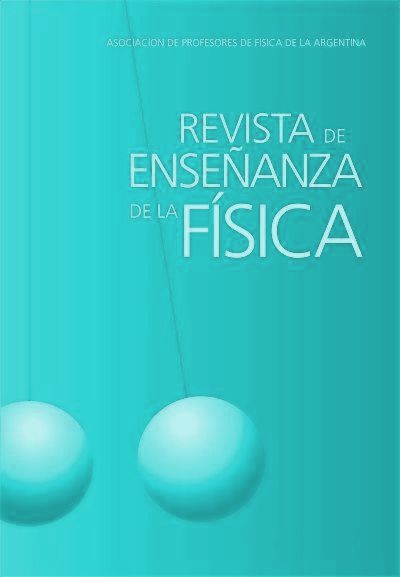Measurement of atmospheric pressure with simple elements in class
Keywords:
Experimental activity, Pressure measurement, Curiosity, Everyday objectsAbstract
During the Physics I classes, a series of attractive experiments were included with the aim of capturing the attention of the students, motivating them in the study of physics and helping them build significant knowledge. Based on this experience with the students, this paper relates a practical activity that can be implemented during a Hydrostatics class or as a laboratory activity. The activity is about measuring atmospheric pressure using a syringe and some other everyday objects. Covering the tip of the syringe, a bottle is hung from the stem and filled until the stem begins to descend at a constant speed. Once this is achieved, the mass of water used and the section of the syringe are measured, and the atmospheric pressure is calculated. Then some modifications are made in the way of proceeding to improve the precision of the measurements, and with these results are achieved with a very acceptable uncertainty considering the elements used. At the end of the course, a survey was carried out and 88% of the students who made comments about the classes highlighted the experiments as a positive experience with which a better understanding of the topics developed is achieved.
References
Crouch C. H. & Mazur E. (2001). Peer Instruction: Ten Years of Experience and Results. American Journal of Physics, 69, 970-977. https://doi.org/10.1119/1.1374249
Monteiro, M., Cabeza, C., Marti, A., Vogt, P. & Kuhn, J. (2014). Angular velocity and centripetal acceleration relationship. The Physics Teacher, 52(5), 312-313.
Calderón, S. E., Núñez, P., Di Laccio, J. L., y Lannelli, L. M. (2015). Aulas-laboratorios de bajo costo, usando TIC. Revista Eureka sobre Enseñanza y Divulgación de las Ciencias, 12(1), 212-226. DOI: 10498/16934
Gutiérrez, E. A. (2018). Experimentos cruciales de laboratorio y enriquecimiento conceptual en el aprendizaje de la física. Tesis de Maestría.
Downloads
Published
Issue
Section
License

This work is licensed under a Creative Commons Attribution-NonCommercial-NoDerivatives 4.0 International License.
Aquellos autores/as que tengan publicaciones con esta revista, aceptan los términos siguientes:Los autores/as conservarán sus derechos de copiar y redistribuir el material, bajo los términos estipulados en la Licencia de reconocimiento, no comercial, sin obras derivadas de Creative Commons que permite a terceros compartir la obra bajo las siguientes condiciones:
- Reconocimiento — Debe reconocer adecuadamente la autoría, proporcionar un enlace a la licencia e indicar si se han realizado cambios. Puede hacerlo de cualquier manera razonable, pero no de una manera que sugiera que tiene el apoyo del licenciador o lo recibe por el uso que hace.
- NoComercial — No puede utilizar el material para una finalidad comercial.
- SinObraDerivada — Si remezcla, transforma o crea a partir del material, no puede difundir el material modificado.
- Los autores/as podrán adoptar otros acuerdos de licencia no exclusiva de distribución de la versión de la obra publicada (p. ej.: depositarla en un archivo telemático institucional o publicarla en un volumen monográfico) siempre que se indique la publicación inicial en esta revista.
- Se permite y recomienda a los autores/as difundir su obra a través de Internet (p. ej.: en archivos telemáticos institucionales o en su página web) antes y durante el proceso de envío, lo cual puede producir intercambios interesantes y aumentar las citas de la obra publicada. (Véase El efecto del acceso abierto).










